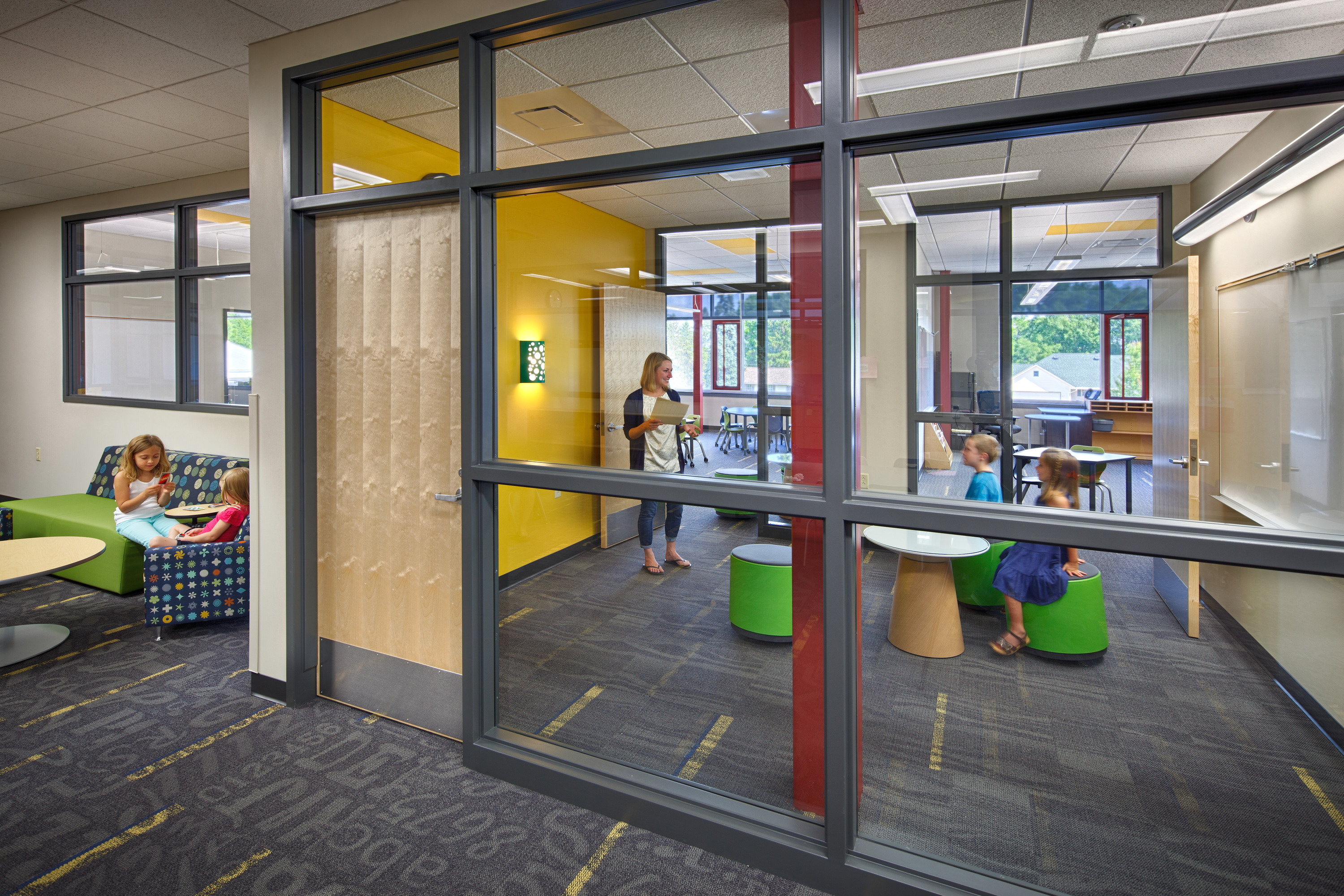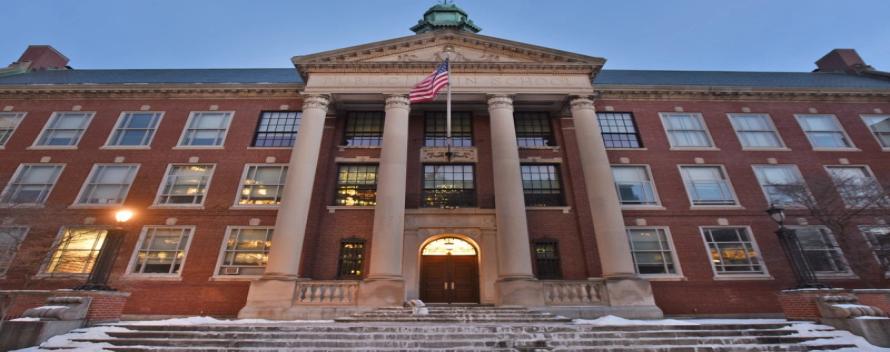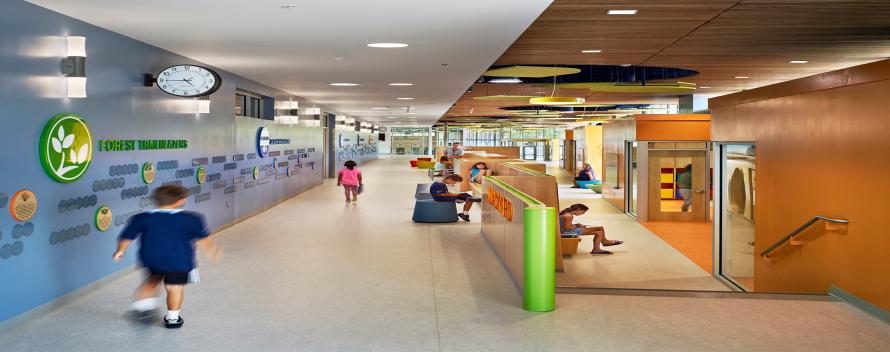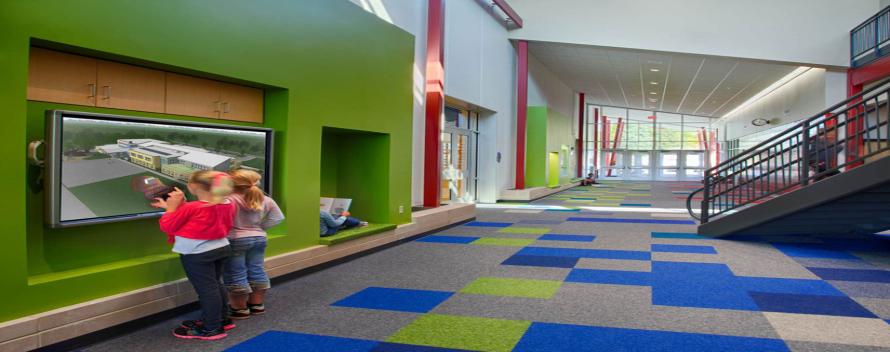
USGBC tools for green schools
LEED certification for schools
LEED is the world’s premier green building certification system and applies to all buildings at all phases of development (design, construction, operations and maintenance). LEED buildings and communities can be found in over 180 countries around the globe, with around 2.2 million square feet being certified daily. The LEED certification process is designed to inspire project teams to seek innovative solutions that are better for our environment and better for our communities. Find LEED-certified schools near you.
To achieve certification
LEED certified projects are third-party verified, which ensures that every commitment has been fulfilled in the effort to protect occupant health and save energy, water and other resources. Third-party verification also affirms the integrity of green building commitments by guaranteeing that project teams are delivering on design plans and goals.
To achieve certification, projects choose which credits within the system are right for their project. Teams first decide what is most important for their community and local environment and then apply strategies to earn points across several sustainability topics.
Based on the number of points achieved, a project receives a LEED rating level: Certified, Silver, Gold, or Platinum. In LEED v5, projects seeking LEED Platinum certification status are given a small set of specific credits that they must pursue as part of their certification to ensure top performance. Learn more about the impact you can make by building to LEED certification by exploring the latest version of the rating system, LEED v5.
Getting started with LEED
Step 1: Select the rating system that best fits your project. There are two options for structures serving K-12 education:
- LEED for Building Design and Construction: Schools
Construction or renovation of buildings dedicated to K-12 learning - LEED for Operations and Maintenance: Schools
Day-to-day operation of existing buildings dedicated to K-12 learning
Step 2: Set goals. Woven throughout the newest version of LEED, project teams will find strategies to improve performance, both at the required (prerequisite) level and at the optional (credit) level. The team should set goals that make the most sense for their community and local environment and then match the credits that support those goals. Using the LEED credit library, teams can support their goals by selecting the associated strategies.
Step 3: Equip your project with the right tools. LEED Reference Guides are available for each rating system to help project teams understand each credit and prerequisite. A comprehensive online toolkit also guides teams to key supplemental material for LEED projects like addenda and sample forms.
PERFORM verification for schools
PERFORM helps organizations manage and enhance the sustainability of their existing building portfolios. The program helps owners, managers, and sustainability specialists to set goals, measure progress against defined targets, and verify achievements.
Organizations set targets for improvement across key metrics in emissions, energy, water, waste, health, resilience, biodiversity and social impact. Learn more in the Performance Metrics (online / PDF).
While LEED certifies individual buildings and projects to a holistic leadership standard, PERFORM works with entire portfolios of existing buildings.
Getting started with PERFORM
The Program Guide (online / PDF) walks organizations through the process.
- Enroll in the program by creating your portfolio and selecting performance criteria.
- Track progress against selected performance criteria.
- Verify performance by submitting for review and receive verification.
- Continuously improve a portfolio's performance by adding additional performance metrics and/or creating new targets for previously verified metrics.
Arc performance platform
Arc is a free online building performance platform that communicates a school building’s sustainability performance data in one easy-to-read score and graphic: energy, water, waste, transportation, and air quality. You can bring your school onto the platform, add your data, and get a benchmarked score for no cost. Arc also has the ability to consolidate your entire school district under one portfolio so you can track and compare schools in one easy view.
Learn tips for using Arc in schools and explore how the platform can support your school’s maintenance and operations.
TRUE Zero Waste
TRUE is a whole systems approach that aims to transform the way materials flow through society, leading to zero waste. It advocates for the adoption of sustainable resource management and waste reduction practices that have positive environmental, health, and economic outcomes. The program promotes the redesigning of resource life cycles so that all products are reused. It encourages processes that take into account the entire lifecycle of products used within a facility.
By following TRUE schools can showcase how they minimizing waste output. Read a case study on the Rochester School in Colombia, who was able to achieve TRUE gold certification with a 97.6% diversion rate. Learn how your school can get involved with the program.



